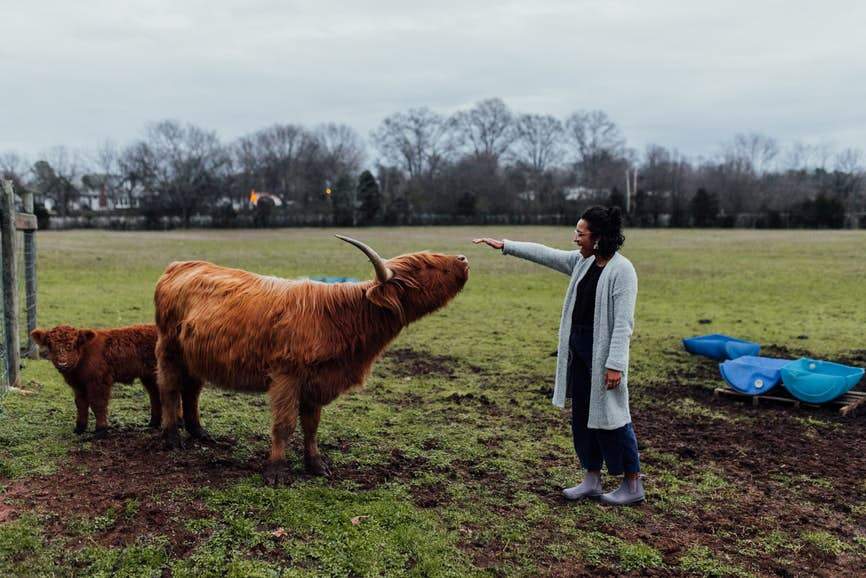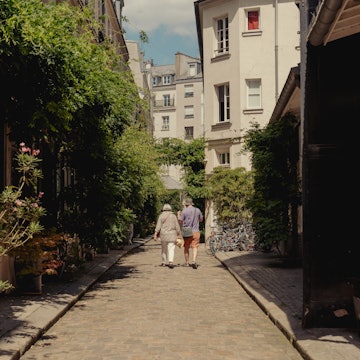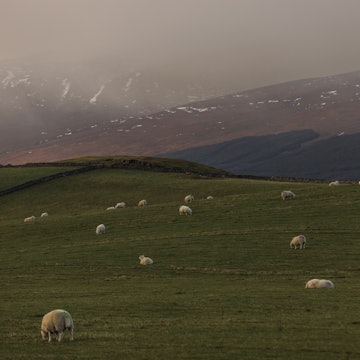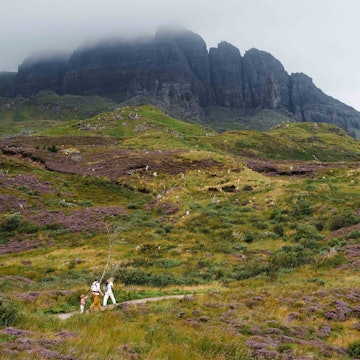
Scotland itineraries: A 7-day whisky itinerary in the Highlands and Islands

May 16, 2025 • 13 min read

Follow this itinerary through the Highlands to find your perfect Scottish whisky. coldsnowstorm/Getty Images
As the old, beloved cliché goes, “If you don’t like whisky, you’ve just not found the right one.” And where better to begin the search than the Scottish Highlands? These peat-hemmed, heather-tipped mountains produce the clear waters that make Scottish single malt one of the world’s favorite tipples. Indeed, why not go one step further and make whisky the focus of a week-long Scotland itinerary?
Four of Scotland’s five prestigious whisky regions – Speyside, Campbeltown, Highland and Islay – fall within the Scottish Highlands and Islands region, so it’s easy to string together an overland tour themed around all things single malt.
All things in moderation, of course. We’ve balanced out the tastings and distillery tours with Highland walks and a taste of Scotland’s layered history, so you won’t miss out on the rich culture that gave the world whisky – a term derived from the Gaelic phrase uisge beatha, meaning “water of life.”
So don your tam o’shanter hat, nominate a designated driver (or download the train, bus and ferry timetables to your phone) and discover more on this seven-day Scottish Highlands whisky itinerary. Sláinte!
When to arrive
Scotland’s Highlands and Islands serve up exactly the sort of climate you would expect from this exposed, northerly location, and the best time to visit varies depending on what you plan to do when you get here. Summers are mild and bright but prone to midges – small, biting flies that can be a menace close to water from June to August.
The spring and fall months are cooler, but also quieter, with smaller crowds at the sights. Lovely natural colors paint the landscape – wildflowers in April and May, autumnal foliage hues in September and October – as migratory puffins and other seabirds gather on the sea cliffs. Winter is for the hardy and determined, but whisky is a famous winter warmer.
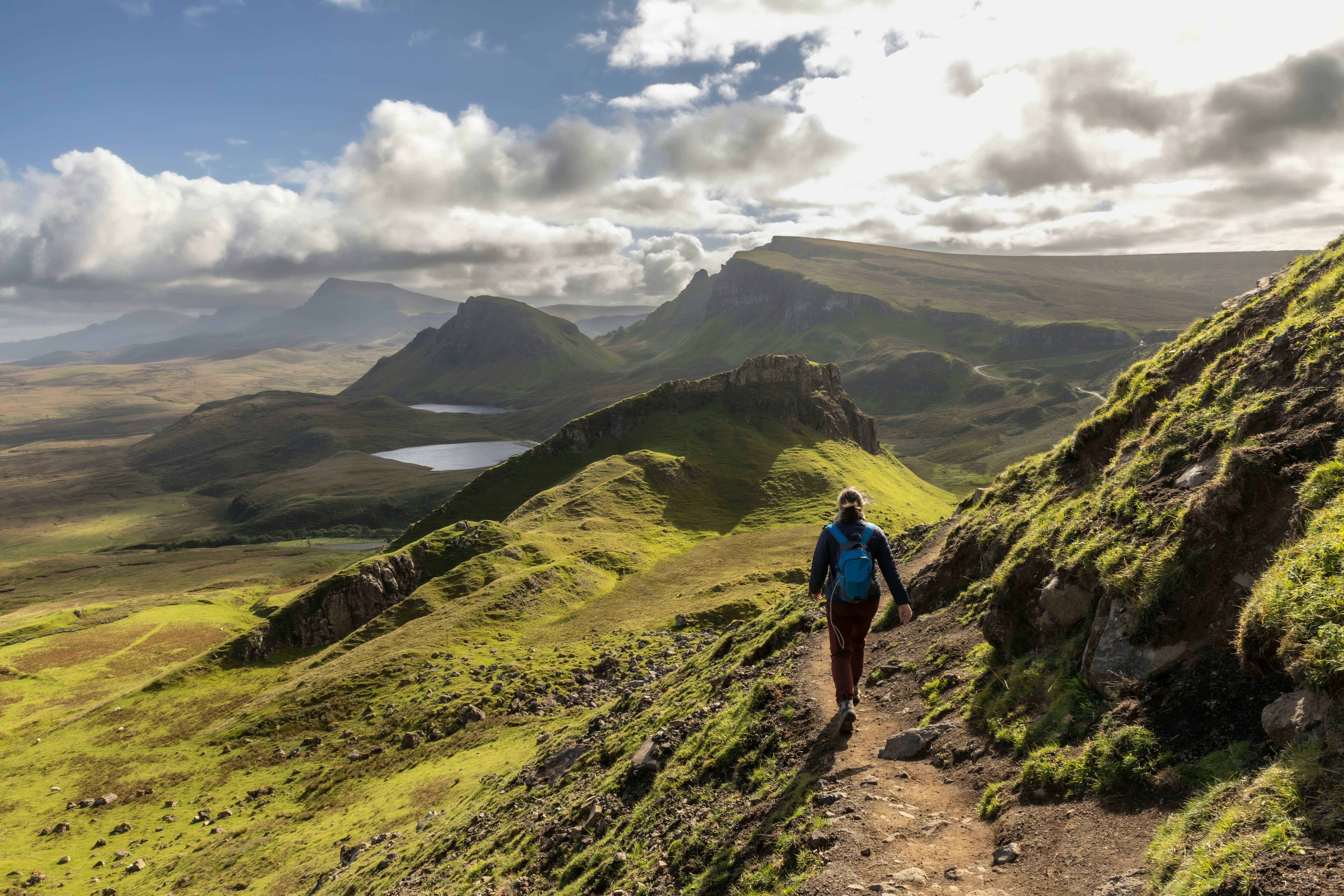
How to get around
Getting to and from this whisky circuit is easy – you’ll start in Edinburgh, accessible by flights from around the world and trains from across the UK, and end in Fort William, from where you can easily connect to Glasgow for onward travel.
A hire car will give you maximum flexibility, but it’s also possible to get around (more slowly) by public transport. Trains run to Inverness, Thurso (for Orkney), Fort William, and Kyle of Lochalsh (for the Isle of Skye). Local buses also connect towns and villages across the region but always check bus timetables (plan routes on Traveline Scotland).
To reach Orkney from the Scottish mainland, the easy option is the NorthLink ferry from Scrabster (near Thurso) to Stromness. To reach Skye, take the bridge at Kyle of Lochalsh.
Cycling and walking are good options for local exploring, though you’ll have to contend with progress-slowing winds and lots of steep gradients. Scotrail has a reservation system for carrying your bike on the train, and you can carry bikes for free on many island ferries.
What to pack
Whenever you visit, you’ll want to bring warm layers and waterproofs. Even in summer, daytime highs rarely exceed 15°C (59°F) and there’s a chance of rain at any time. During the summer, bring repellent and light-colored clothing with long sleeves to deter midges.
A windproof layer is another must. While winter sees the worst of the westerly and south-easterly gales, it can get windy here year-round. Summer, meanwhile, sees the fog known locally as "sea haar," which can reduce visibility and obscure the views. Bring sturdy, waterproof footwear and spare socks as the ground is often soggy underfoot.
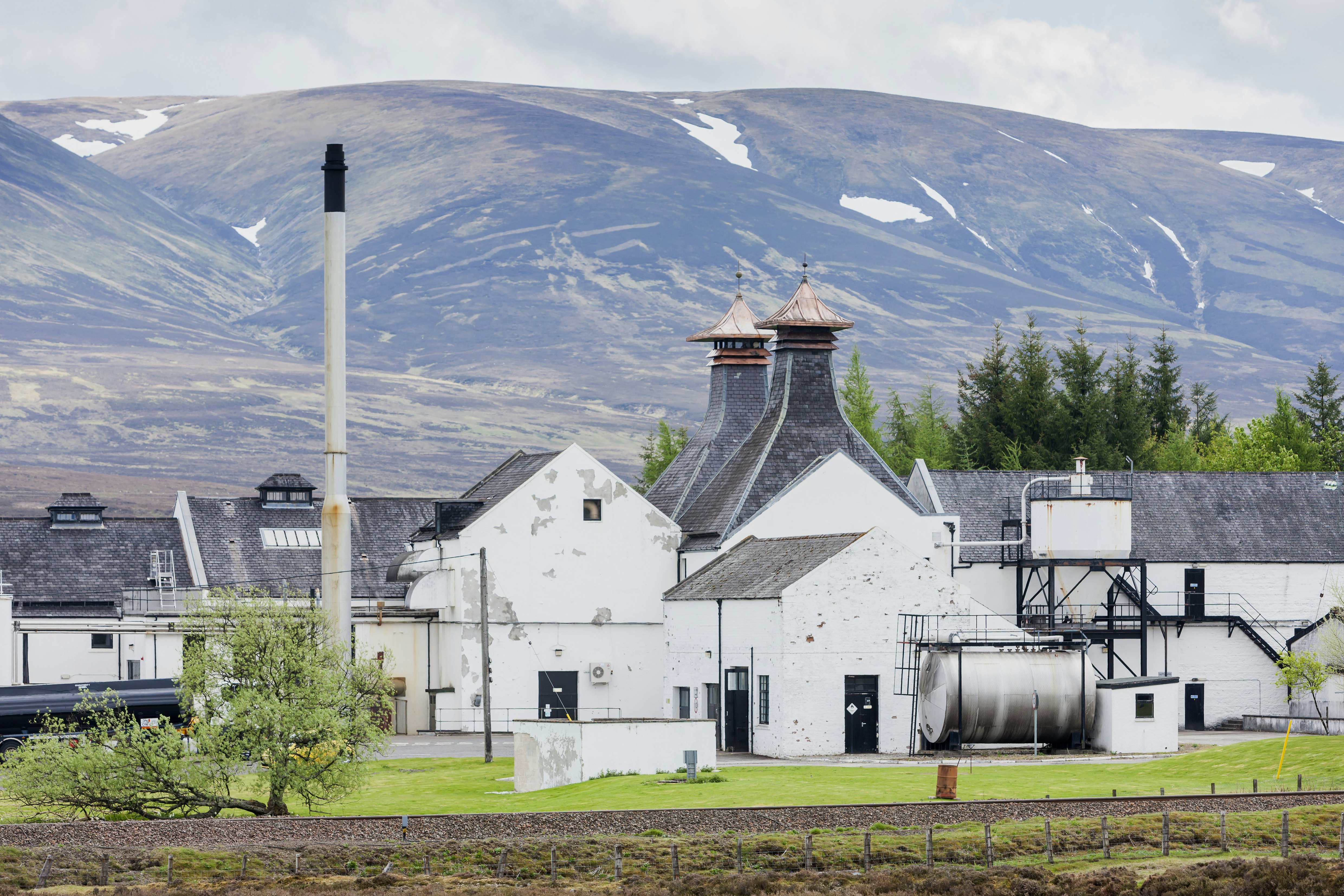
Day 1: Start with a Cairngorms whisky trail
Go from Edinburgh to Pitlochry: Scotrail trains can get you from Edinburgh to Pitlochry in two hours, or you can drive via the M90 and A9.
How to spend the day: This Scottish whisky itinerary starts off with two respected distilleries in the town of Pitlochry, the gateway to Highland Perthshire, packed with Victorian-era hotels, tearooms and knitwear shops.
Get your whisky bearings with a visit to the Blair Athol Distillery, where tours focus on whisky-making and the blending of this well-known drop. While you’re in Pitlochry, take a walk from Pitlochry via the Black Spout waterfall to the Edradour Distillery – it’s currently closed to visitors but it’s extremely picturesque.
Also swing by magnificent Blair Castle, seat of the Duke of Atholl, head of Clan Murray. It’s set beneath forested slopes above the River Garry, and the rooms open to the public present a wonderful picture of upper-class Highland life from the 16th century onward.
Continue by road or rail to the village of Dalwhinnie, home to the highly regarded Dalwhinnie Distillery. Popping out from the moorside landscape, this imposing white distillery is topped by two pagoda-roofed malting towers, and tours run regularly, except during the “silent season” from mid-May to mid-June.
Close out day one in Aviemore, at the heart of Cairngorms National Park, the UK’s largest protected area. There are plenty of appealing places to stay – try the central, turreted Cairngorm Hotel for a dose of old Scottish charm (their cozy bar is well-stocked with single malts).
Evening: Aviemore has some good eating. The Cairngorm Hotel has a quality, familiar Scottish hotel menu, or there’s the snug Old Bridge Inn, with pub fare, a crackling log fire and music sessions. Before bed, get a nightcap at the Winking Owl, a favorite watering hole for hikers and climbers.

Day 2: Get a taste of the Cairngorms (and more whisky) from Aviemore
Explore the Cairngorms from Aviemore: Aviemore is a great base for exploring Cairngorms National Park; tours and buses can get you into the mountains and out to local distilleries, but getting around will be easier if you have your own vehicle.
How to spend the day: Use the morning to get out into the magnificent Cairngorms scenery. From the Coire Cas car park, 10 miles (16km) southeast of Aviemore, the Cairngorm Mountain Railway will whisk (not whisky) you to a plateau on the slopes of 1245m (4085ft) Cairn Gorm, the sixth-highest summit in the UK.
Visit the “events” page of the Cairngorms National Park website for details of ranger-led walks to the summit of Cairn Gorm and other walks in the area. Alternatively, you can walk up from the car park in around two hours. In winter, the funicular doubles as the main lift for the Aviemore ski area.
In the afternoon, head northeast to Tomintoul and Glenlivet, home to whisky royalty. At Tomintoul, you can sample the award-winning 16-year-old “gentle dram” on a tour of the Tomintoul Distillery, a relative newcomer to the Speyside distilling family, established in the 1960s.
About five miles (8km) northeast at Ballindalloch lies the distillery of Glenlivet, a doyen of the Speyside whisky scene; tours include tastings of their prestigious single malts. Further along the A95, Macallan offers tasting experiences at its attractive estate at Craigellachie from Thursday to Sunday, while Glenfiddich at Dufftown offers tours of its atmospheric premises with tastings of its highly awarded creations.
Evening: Head to nearby Inverness for the night – about an hour northwest of Aviemore by road or train. Sample imaginative Scottish cooking at Rocpool or go off-piste with Mediterranean flavors (and a broad menu of single malts) at Mustard Seed by the river.

Day 3: Head from Inverness to Orkney
Go to Kirkwall, Orkney: The trip from Inverness to Thurso, where you can travel onwards by ferry to Stromness on Orkney, takes three hours by car or four hours by train. Aim to be at Scrabster in time to catch the 7pm ferry.
How to spend the day: You’ll want to see a bit of Inverness before you head north. The city center is dominated by the picturesque Baronial turrets of Inverness Castle, a pink-sandstone confection dating from the 1840s that replaced a medieval castle blown up by the Jacobites in 1746. The gorgeous gardens and terraces offer panoramic views south towards the Great Glen and Ben Wyvis.
Alternatively, head east from Inverness to the Culloden battlefield, where the last pitched battle on British soil took place in 1746. The Jacobite defeat at Culloden sounded the death knell for the traditional Highland way of life, ushering in the infamous Highland Clearances. Just east is an even older symbol of Highland identity, the Bronze Age Clava Cairns, made famous by Diana Gabaldon’s time-travelling romance, Outlander.
Depending on your means of travel, you can head straight to Thurso by train, or make some stops as you drive north along the A9 – part of the North Coast 500 road that circles the northern Highlands Historic Dunrobin Castle, the largest house in the Highlands, is a worthy detour, as is Alness, home to the Dalmore Distillery (tours here are due to resume in 2026). Or there's the famous Glenmorangie distillery near Tain, makers of light-colored, full-flavored single malts.
Evening: Dining options include posh Bydand in Thurso, dining on the ferry, or eating on arrival in Stromness; top choices include the laid-back Ferry Inn and the restaurant at the stone Stromness Hotel on the quayside.

Day 4: Blend whisky and history on Mainland, Orkney
Explore Mainland, Orkney: If you didn’t come with a car, you can rent one locally, get around using Orkney’s local buses, or rent a bike from Orkney Cycle Hire in Stromness.
How to spend the day: Start with a quayside stroll past the handsome stone homes of Stromness, and visit the Stromness Museum, displaying South Sea Island artifacts gathered by Captain Cook, Neolithic artifacts and displays on the WWI German fleet that was scuppered in Scapa Flow.
Journey back into Stone Age Scotland at Skara Brae, buried by storms in around 3500 BCE. Set by a scenic bay, its thick-walled stone dwellings are some of the best-preserved Neolithic structures in Europe, complete with their original stone furniture.
Skara Brae forms part of the UNESCO-listed Heart of Neolithic Orkney, along with the Ring of Brodgar and the Stones of Stenness, two impressively preserved stone circles from the third millennium BCE. Nearby is the associated chambered tomb of Maeshowe, whose ancient stone chamber was daubed with bawdy graffiti by Viking raiders in the 12th century.
After lunch, shift the focus to Orkney tipples. On the southern outskirts of Kirkwall, Orkney’s capital, the Highland Park distillery is the most northerly whisky distillery in Scotland; its whisky line-up includes a limited edition 54-year-old single malt. North of Stromness at Quoyloo, the Orkney Brewery uses old whisky casks to age its moody Dark Island ale, and they offer brewery tours.
Evening: Take a second night in Stromness so you can catch the early morning ferry back to Scrabster – eat here, or try some of the offerings in Kirkwall. Helgi’s is good for pub grub, while Storehouse and Lynnfield Hotel serve up local Orcadian treats.

Day 5: Travel south and west to the Isle of Skye
Go to Skye: Return to mainland Scotland on the early morning ferry, then drive back to Inverness and turn east to Kyle of Lochalsh along the A82 and A87, or follow the same route by train.
How to spend the day: As you pass through Inverness, you can tick off any sights you missed – with a car, consider detouring northeast of Inverness to Cawdor Castle, of Macbeth fame, or dropping into Fort George, founded in 1748 as a base for King George II’s army of occupation in the Highlands.
It will be late afternoon or early evening when you arrive on the Isle of Skye via the Skye Bridge, so stop in the cute village of Broadford, which is well stocked with places to eat and sleep.
Evening: In Broadford, seafood and venison are hot menu items. Dine heartily at inviting The Claymore, or try Red Skye, set in a historic schoolhouse east of Broadford.

Day 6: Drink in drams and dramatic landscapes on Skye
Go around Skye: Skye is a big island – Scotland’s second largest, in fact. Even if you came by public transport, consider renting a car; Morrisons in Portree can meet you with a rental vehicle in Broadford.
How to spend the day: Day six is going to be half-outdoorsy, half boozy, so start out early to grab a parking space for a hike. Use the morning to soak up Skye’s legendary scenery, starting with the Quiraing, one of the island’s most hauntingly attractive landscapes.
A well-trodden trail from the Quiraing car park leads up to the jagged rocks known as the Prison; from here you can gaze across to the rocky spur known as the Needle, then follow a cliff-hugging path to the Table – a grassy plateau where local farmers hid their cattle from Viking raids.
Alternatively, drive southwest from Broadford along the B8083 towards Elgol. This achingly scenic drive passes rounded Beinn na Caillich, the picturesque valley of Strath Suardal, and solemn Blà Bheinn across Loch Slapin. In Elgol, traditional crofts lead down to the town’s pier, which gazes toward the Cuillin Hills.
After lunch, make for Skye’s two famous distilleries. Start where it all began at Talisker Distillery – a veteran from 1830 – where distillery tours and tastings offer the chance to sample smoky, salty classics and less conventional drops matured in sherry and port casks.
After a brief walk along the sands of Talisker Bay (for some sobering sea air), travel south to the Sleat peninsula to visit Torabhaig Distillery – the new kid on the block, open since 2017 – to savor its lightly peated, vanilla-sweetened single malt.
Evening: A second night on Skye provides a chance to sample more island treats in Broadford or head north to Portree for dinner, perhaps followed by a drink and a toe-tap to a Scottish band at the Isles Inn.

Day 7: End the whisky loop in Fort William
Go to Fort William: To reach the final stop on this Highlands circuit, go by Citylink bus or car for around two hours to Fort William, from where you can connect by road or train to Glasgow for onward travel.
How to spend the day: It will be late morning by the time you reach Fort William, but the rewards come quickly. Basking on the shores of Loch Linnhe, Fort William has one of the most enviable settings in the whole of Scotland.
Magical Glen Nevis begins just north of town, clasping the southern flanks of 1344m (4409ft) Ben Nevis, Britain’s highest mountain – a magnet for hikers and climbers. You would need a whole day (and clement weather) to reach the summit – on a short visit, take in the life-affirming views from Corpach, about two miles (3.2km) north of Fort William.
Dive deeper into the scenery on a hike in gorgeous Glen Nevis. An atmospheric 1.5-mile (2.4km) walk along a precarious path through the verdant Nevis Gorge will take you to the wide grassy amphitheater of Steall Meadow and gushing Steall Falls, a key filming location for Harry Potter and the Goblet of Fire.
In the afternoon, drop into the West Highland Museum to view its Highland memorabilia, including a hidden portrait of Bonnie Prince Charlie that can only be seen using a cylindrical mirror. To end on a whisky note, you could visit the Ben Nevis distillery – founded in 1825 but today Japanese-owned – near Inverlochy Castle, or buy a posh single malt to take home from Fort William's Whisky Shop.
Evening: Mark the end of this whisky tour with a slap-up dinner at swanky Silly Goose at the Lime Tree Hotel or feast on fresh seafood at Crannog at the Garrison West pub, then raise a toast with a glass of your favorite single malt on the lochside terrace at the Ben Nevis Bar.
This article was adapted from Lonely Planet’s Scottish Highlands & Islands guidebook, published in June 2025.





